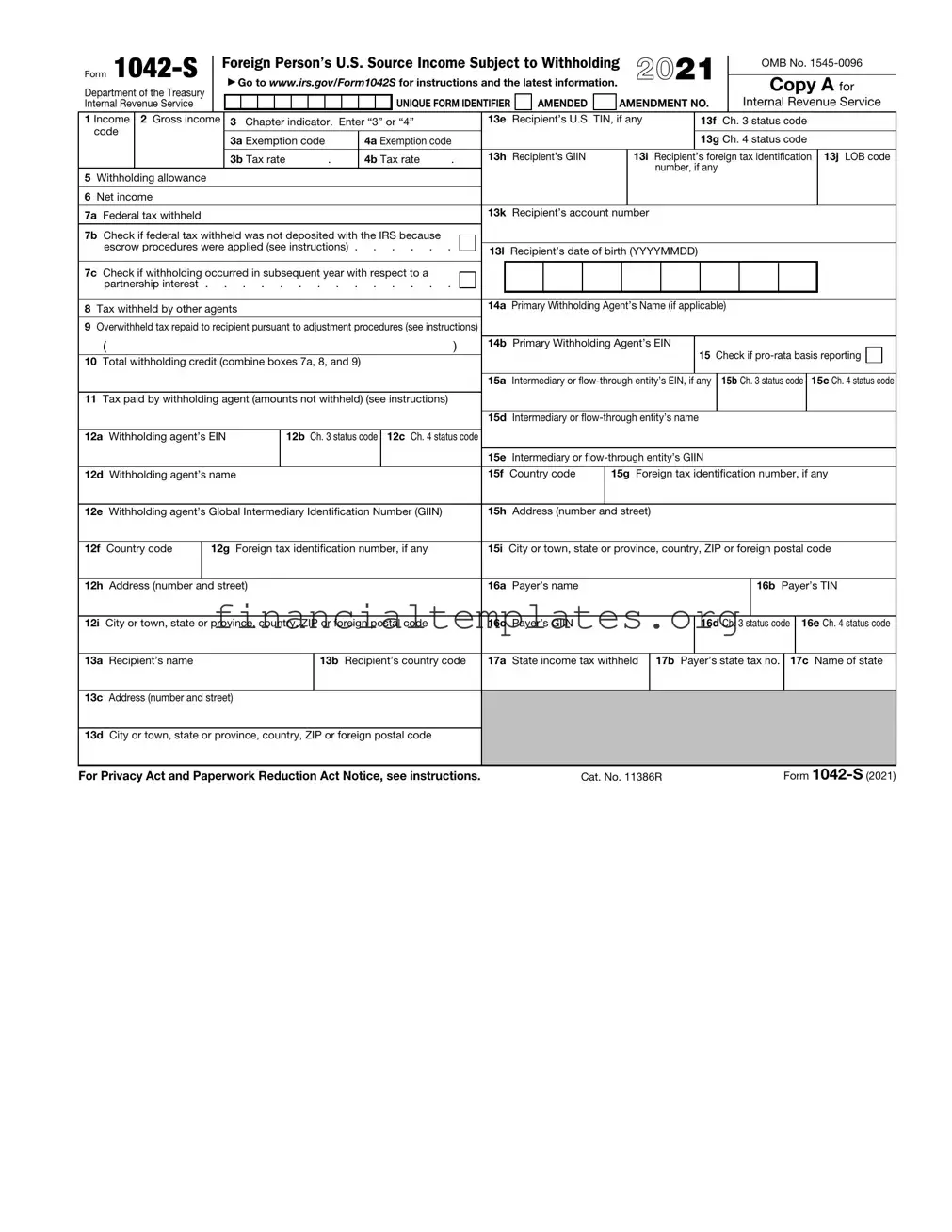Explanation of Codes (continued)
10Trust other than Withholding Foreign Trust
11Withholding Foreign Trust
12Qualified Intermediary
13Qualified Securities Lender—Qualified Intermediary
14Qualified Securities Lender—Other
15Corporation
16Individual
17Estate
18Private Foundation
19International Organization
20Tax Exempt Organization (Section 501(c) entities)
21Unknown Recipient
22Artist or Athlete
23Pension
24Foreign Central Bank of Issue
25Nonqualified Intermediary
26Hybrid entity making Treaty Claim
35Qualified Derivatives Dealer
36Foreign Government—Integral Part
37Foreign Government—Controlled Entity Pooled Reporting Codes10
27Withholding Rate Pool—General
28Withholding Rate Pool—Exempt Organization
29PAI Withholding Rate Pool—General
30PAI Withholding Rate Pool—Exempt Organization
31Agency Withholding Rate Pool—General
32Agency Withholding Rate Pool—Exempt Organization
Chapter 4 Status Codes
01U.S. Withholding Agent—FI
02U.S. Withholding Agent—Other
03Territory FI—not treated as U.S. Person
04Territory FI—treated as U.S. Person
05Participating FFI—Other
06Participating FFI—Reporting Model 2 FFI
07Registered Deemed-Compliant FFI—Reporting Model 1 FFI
08Registered Deemed-Compliant FFI—Sponsored Entity
09Registered Deemed-Compliant FFI—Other
10Certified Deemed-Compliant FFI—Other
11Certified Deemed-Compliant FFI—FFI with Low Value Accounts
12Certified Deemed-Compliant FFI—Nonregistering Local Bank
13Certified Deemed-Compliant FFI—Sponsored Entity
14Certified Deemed-Compliant FFI—Investment Entity that does not maintain financial accounts
15Nonparticipating FFI
16Owner-Documented FFI
17U.S. Branch—treated as U.S. person
18U.S. Branch—not treated as U.S. person (reporting under section 1471)
19Passive NFFE identifying Substantial U.S. Owners
20Passive NFFE with no Substantial U.S. Owners
21Publicly Traded NFFE or Affiliate of Publicly Traded NFFE
22Active NFFE
23Individual
24Section 501(c) Entities
25Excepted Territory NFFE
26Excepted NFFE—Other
27Exempt Beneficial Owner
28Entity Wholly Owned by Exempt Beneficial Owners
29Unknown Recipient
30Recalcitrant Account Holder
31Nonreporting IGA FFI
32Direct reporting NFFE
33U.S. reportable account
34Nonconsenting U.S. account
35Sponsored direct reporting NFFE
36Excepted Inter-affiliate FFI
37Undocumented Preexisting Obligation
38U.S. Branch—ECI presumption applied
39Account Holder of Excluded Financial Account11
40Passive NFFE reported by FFI12
41NFFE subject to 1472 withholding
50U.S. Withholding Agent—Foreign branch of FI
Pooled Reporting Codes
42Recalcitrant Pool—No U.S. Indicia
43Recalcitrant Pool—U.S. Indicia
44Recalcitrant Pool—Dormant Account
45Recalcitrant Pool—U.S. Persons
46Recalcitrant Pool—Passive NFFEs
47Nonparticipating FFI Pool
48U.S. Payees Pool
49QI-Recalcitrant Pool—GeneraI13
Box 13j. LOB Code (enter the code that best describes the applicable limitation on benefits (LOB) category that qualifies the taxpayer for the requested treaty benefits).
LOB Code |
LOB Treaty Category |
02Government – contracting state/political subdivision/local authority
03Tax exempt pension trust/Pension fund
04Tax exempt/Charitable organization
05Publicly traded corporation
06Subsidiary of publicly traded corporation
07Company that meets the ownership and base erosion test
08Company that meets the derivative benefits test
09Company with an item of income that meets the active trade or business test
10Discretionary determination
11Other








